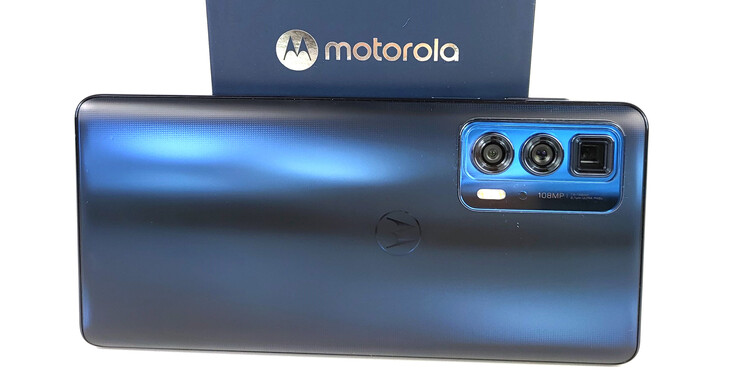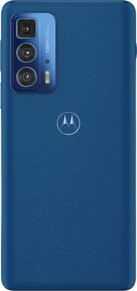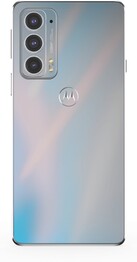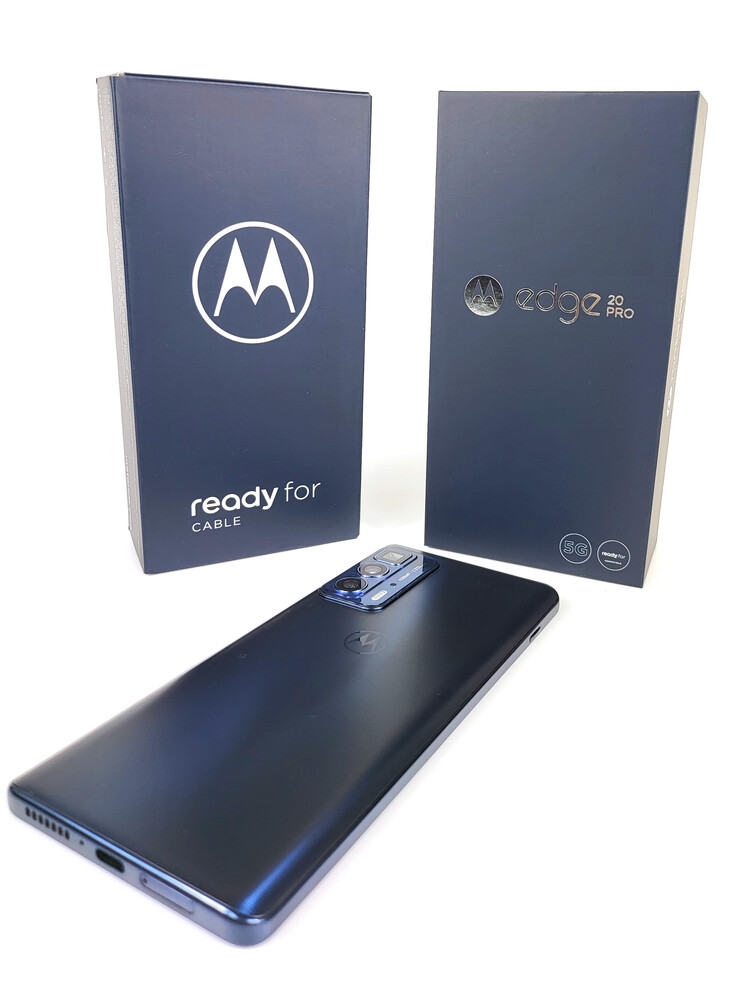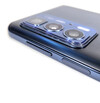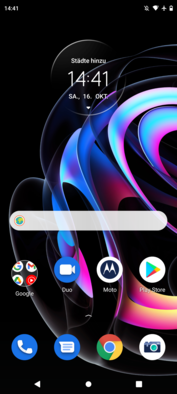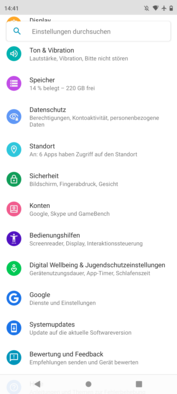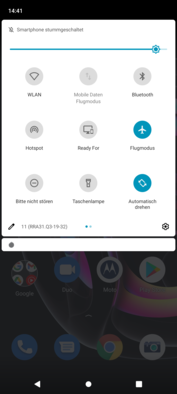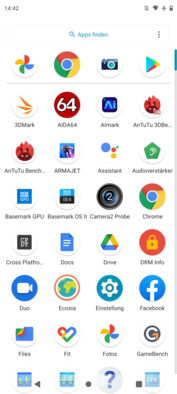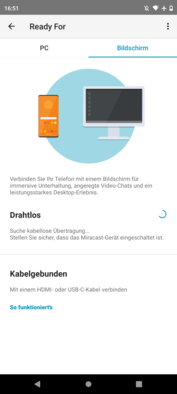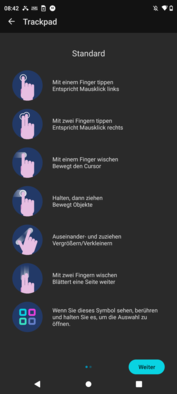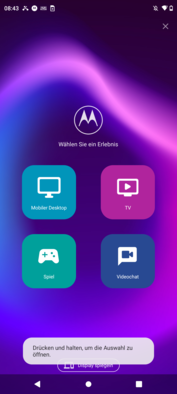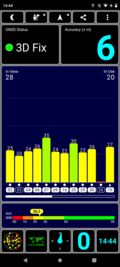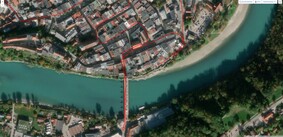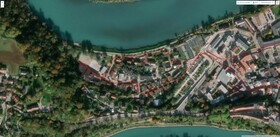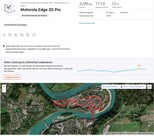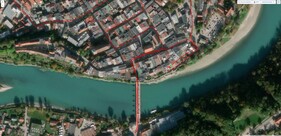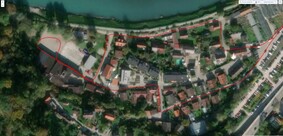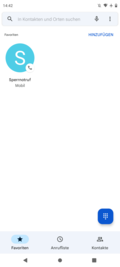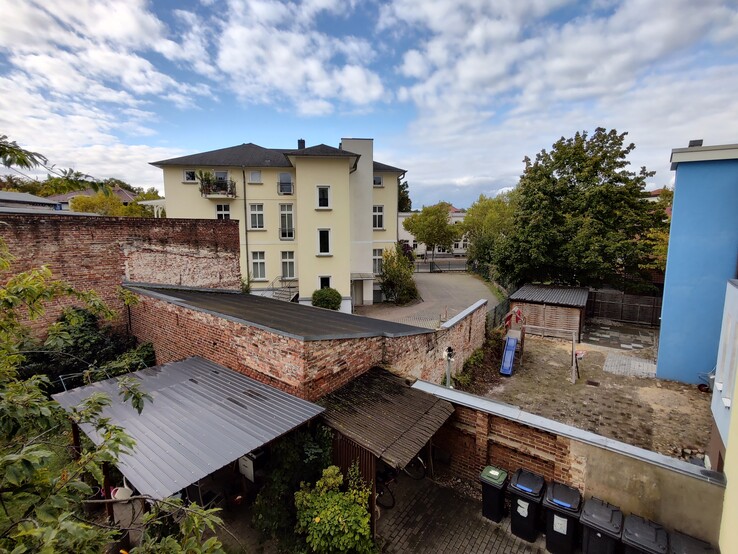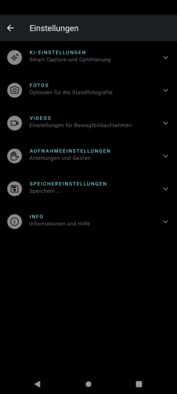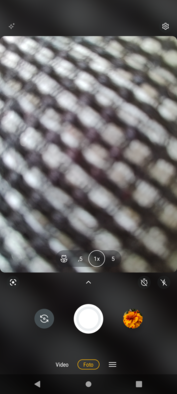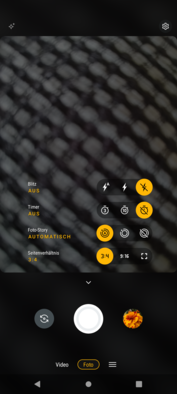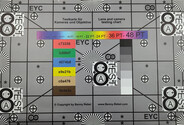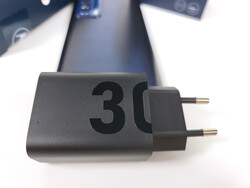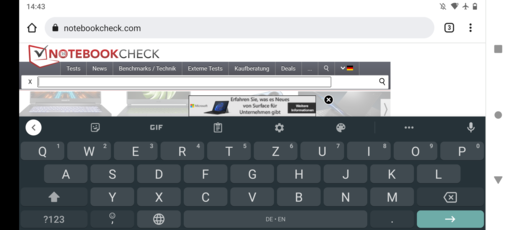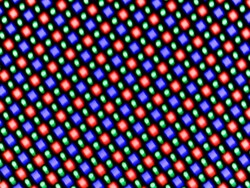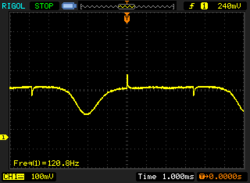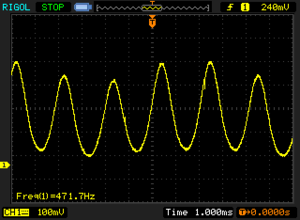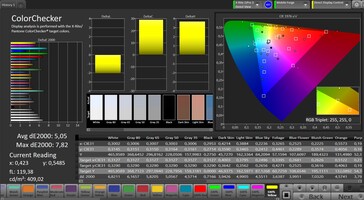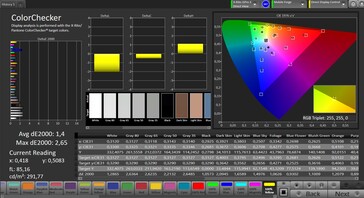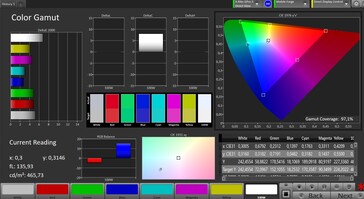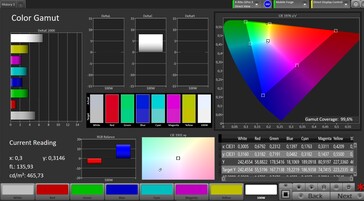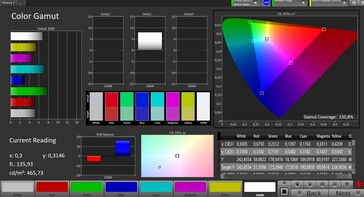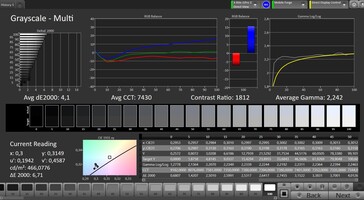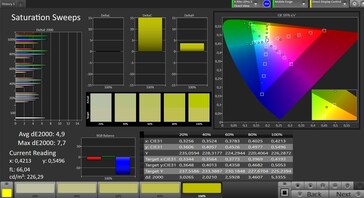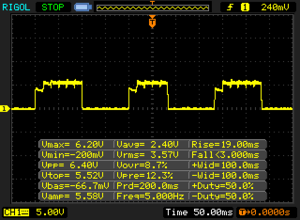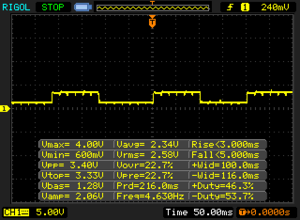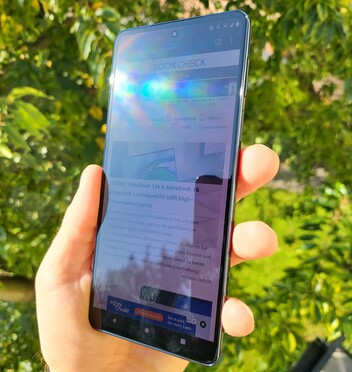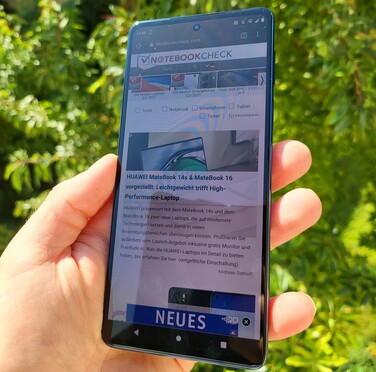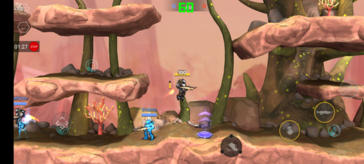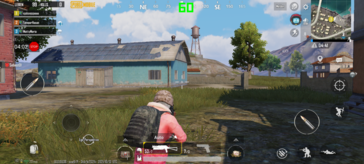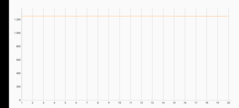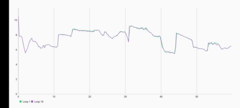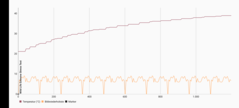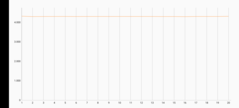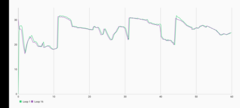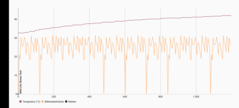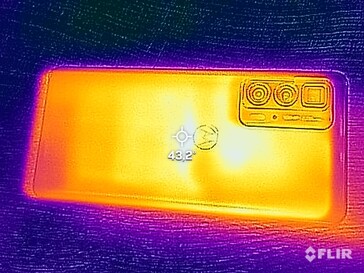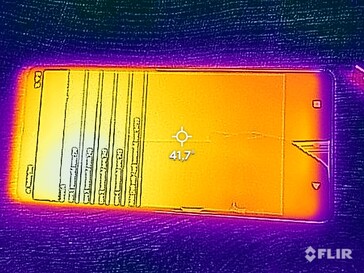Motorola Edge 20 Pro review: Budget flagship smartphone with a 144 Hz display and 12 GB of RAM
Motorola is focusing on the camera and display quality in particular for its 2021 flagship series. It's therefore hardly surprising that the Edge 20 Pro is the manufacturer's first smartphone with a periscope telephoto lens and a panel with a refresh rate of 144 Hz. The 6.7-inch OLED display also features 10-bit color reproduction and HDR10+ support. A Snapdragon 870 along with 12 GB of LPDDR5 RAM and UFS 3.1 storage power the Motorola phone running Android 11.
However, the Edge 20 Pro, which is equipped with 5G and Wi-Fi 6, has to deal with some compromises compared with the high-end competition for an MSRP of just under 700 Euros (~$812). Read more about these in our comprehensive review.
Possible contenders in comparison
Rating | Date | Model | Weight | Drive | Size | Resolution | Price |
|---|---|---|---|---|---|---|---|
| 86.9 % v7 (old) | 10 / 2021 | Motorola Edge 20 Pro SD 870, Adreno 650 | 185 g | 256 GB UFS 3.1 Flash | 6.70" | 2400x1080 | |
| 86.6 % v7 (old) | 08 / 2021 | Xiaomi Mi 11i SD 888 5G, Adreno 660 | 196 g | 256 GB UFS 3.1 Flash | 6.67" | 2400x1080 | |
| 87.2 % v7 (old) | 04 / 2021 | OnePlus 9 SD 888 5G, Adreno 660 | 192 g | 256 GB UFS 3.1 Flash | 6.55" | 2400x1080 | |
| 83.6 % v7 (old) | 10 / 2021 | Nubia RedMagic 6S Pro SD 888+ 5G, Adreno 660 | 220 g | 128 GB UFS 3.1 Flash | 6.80" | 2400x1080 | |
| 89.6 % v7 (old) | 02 / 2021 | Samsung Galaxy S21+ Exynos 2100 5G, Mali-G78 MP14 | 200 g | 128 GB UFS 3.1 Flash | 6.70" | 2400x1080 |
Case - Edge 20 Pro with Gorilla Glass 5
The splash-proof and IP52-certified glass case of the Edge 20 Pro is available in three different colors. Despite the plastic frame, the Motorola phone leaves a high-quality impression, and the build quality is very good as well. It looks less bulky compared to other smartphones in this price range, especially due to its relatively low weight of well under 200 grams.
The flat OLED panel is surrounded by quite wide bezels on all four sides considering that it's a high-end phone. As a result, the screen-to-body ratio of the Edge 20 Pro is only 89% - in comparison, the Xiaomi Mi 11i achieves a value of over 91%. The 6.7-inch display is "only" protected by 5th generation Gorilla Glass. For just under 700 Euros (~$700), though, it could have featured the latest protection standard, "Victus".
The pronounced camera hump on the back clearly protrudes from the case, so that it wobbles a lot when you use the device on a table. Unlike last year's Edge generation, the back of the Motorola Edge 20 Pro doesn't look hollow, and its stability is satisfactory. The card slot in the frame can be equipped with one nano SIM card on each side, and it's flush with the frame.
Similar to the manufacturer's Moto series, you can use a dedicated button on the left side of the Edge 20 Pro to launch Google Assistant for voice control.
Connectivity - Motorola phone with UFS 3.1
The Motorola phone's connectivity features include USB OTG for connecting external accessories quickly as well as for wireless image transmission of the screen content. The 4,500 mAh battery is also charged via the USB-C port at the bottom of the case using 30-watt TurboPower technology. In addition, the port supports the USB 3.1 Gen 1 standard as well as DisplayPort 1.4 for wired data transfers. Fortunately, the manufacturer includes the corresponding DisplayPort-capable USB-C-to-HDMI cable with its flagship smartphone.
The UFS 3.1 storage has a capacity of 256 GB, but only 223 GB is available to the user out of the box. The internal storage of the Edge 20 Pro is not expandable. Besides the SD card slot, users will also have to do without an IR blaster, a radio receiver, and an audio jack. Furthermore, there's neither a notification LED nor a proper always-on display feature - Motorola remains true to its preview display feature in the Edge series as well.
Software - Motorola smartphone with Android 11
Motorola has preinstalled a minimalist manufacturer interface based on Android 11 on its flagship smartphone, with security patches at the level of September 2021 at the time of testing. Motorola promises at least two Android operating system updates and two years of bi-monthly security updates for its Edge 20 lineup.
As before, the MyUX user interface features the familiar Moto Experiences, including gestures to activate the flashlight or individual design customizations. With the exception of Facebook, third-party apps are not present - we only find Google apps and in-house apps after booting the system. The Camera2 API is available with Level 3, and thanks to DRM Widevine L1, it's possible to stream content in HD quality.
Besides the minimalistic user interface, Motorola equips its Edge 20 Pro with hardware and software security features called ThinkShield for Mobile. This is a platform based on Lenovo's ThinkShield brand, meaning that there's supposed to be special protection against malware, phishing, and network attacks.
The "Ready For" functions can now also be used wirelessly on an external TV or computer screen. This makes it easy to use this special desktop mode from the comfort of your couch. In addition, the Edge 20 Pro can serve as a remote control or camera for video calls.
Communication and GNSS - Edge 20 Pro with Wi-Fi 6
In terms of communication, the Motorola phone offers Bluetooth 5.1, dual-SIM functionality, and 5G but without mmWave support, as well as an NFC chip for near-field communication. In addition to the 5G standard, the premium smartphone has access to a total of 25 LTE bands - all relevant LTE frequencies for German-speaking countries, including band 28, are covered. The Edge 20 Pro is also ideally equipped for traveling, such as to the USA, for example.
Within the home Wi-Fi network, the Edge 20 Pro supports the fast ax standard with Wi-Fi 6, which results in high transfer rates in our measurements. However, the Xiaomi Mi 11i is much faster when sending data. In combination with our Netgear Nighthawk AX12 reference router, the Motorola phone could also be a bit more consistent when receiving data.
| Networking | |
| iperf3 transmit AX12 | |
| Xiaomi Mi 11i | |
| Nubia RedMagic 6S Pro | |
| Samsung Galaxy S21+ | |
| Samsung Galaxy S21+ | |
| OnePlus 9 | |
| Motorola Edge 20 Pro | |
| iperf3 receive AX12 | |
| Nubia RedMagic 6S Pro | |
| Samsung Galaxy S21+ | |
| Samsung Galaxy S21+ | |
| Xiaomi Mi 11i | |
| OnePlus 9 | |
| Motorola Edge 20 Pro | |
In order to be able to assess the tracking accuracy in practice, we take the Edge 20 Pro on a short trip and simultaneously log the route with a Garmin Edge 520 for comparison purposes. Only 90 meters lie between the smartphone's GPS module and the navigation device at the end of the nearly four-kilometer long test course.
The Motorola phone's positioning capabilities aren't always perfect, but the deviations in the detailed view of the GPS log are small, so that there are hardly any noteworthy inaccuracies in the Edge 20 Pro's route. To determine the position, the GPS module uses the GPS (L1+L5), GLONASS, QZSS, and Galileo main satellite systems, as well as the SBAS satellite-based supplementary system.
Telephone and call quality - Moto smartphone with VoLTE
The Edge 20 Pro can manage up to two SIM profiles simultaneously. Motorola doesn't offer an eSIM option, but VoLTE and Wi-Fi calling are on board in return. Call quality is good, and even loud ambient noise is suppressed well. However, the maximum volume of the earpiece is relatively low. Video calls using the Skype app and the speaker work smoothly and pleasantly on the premium phone thanks to the three built-in microphones.
Cameras - Edge 20 Pro with 108 MP
The 108 MP main camera of the Edge 20 Pro provides a good overall image quality in our sample photos, where nine pixels are combined into one large Ultra Pixel by default. With an optical format of 1/1.52", it's the largest camera sensor that Motorola has installed in a smartphone so far. Pictures taken with the Samsung ISOCELL HM2 remain relatively natural and soft. Motorola almost doesn't oversharpen subjects in postprocessing, unlike some rivals that perform a heavy amount of artificial sharpening in postprocessing - like the Apple iPhone 13 in our photo comparison, for example. Nonetheless, the Edge 20 Pro's overall sharpness level could be a bit better, although the OnePlus 9 Pro produces much blurrier results at the edges in particular.
Motorola should, however, improve color accuracy via software. We use the ColorChecker Passport to analyze color reproduction under controlled lighting conditions in comparison to the actual reference colors. Measurements are taken once under full studio lighting and once at a light intensity of 1 lux.
The analysis performed with the ColorChecker Passport reveals high deviations compared to the actual reference colors, especially considering that the Pro model is the flagship device of the Edge series. Blue and greenish shades are significantly brightened and displayed too garishly using the 108 MP camera. The white balance has also been calibrated a bit too warm.
The Edge 20 Pro does a good job in low light despite the lack of OIS - at least in steady hands. The increased light sensitivity of the Ultra Pixel results in decently illuminated pictures even in low-light conditions. The sharpness and dynamic range are satisfactory for the price range. The same is true for the ultra wide-angle photos with a resolution of 16 MP, but the detail and sharpness level is not quite on par with the OnePlus 9.
The zoom capabilities of the Edge 20 Pro are very good. The optically stabilized 8 MP periscope camera, which redirects the light captured at a 90-degree angle, results in a decent sharpness at 5x. Even the 50x super zoom works out details quite nicely.
The photos taken with the front-facing camera are also impressive. Motorola finds an appealing balance between oversharpening and softening here. The details and image dynamics are at a good level in daylight. Switching to portrait mode, though, leads to blown-out and overexposed picture areas in bright backgrounds.
In terms of videos, the Motorola Edge 20 Pro is capable of recording at 8K; it also offers an audio zoom to better capture the sound coming from a subject while filtering out ambient noise and voices. Switching lenses during video recordings is only possible in the Full HD setting - when shooting in UHD quality (24, 30, 60 fps), users are limited to the 108 MP camera. Selfie enthusiasts also get a 4K option with the 32 MP lens on the front.
Image comparison
Choose a scene and navigate within the first image. One click changes the position on touchscreens. One click on the zoomed-in image opens the original in a new window. The first image shows the scaled photograph of the test device.
Main cameraMain cameraLow lightUltra-wide angle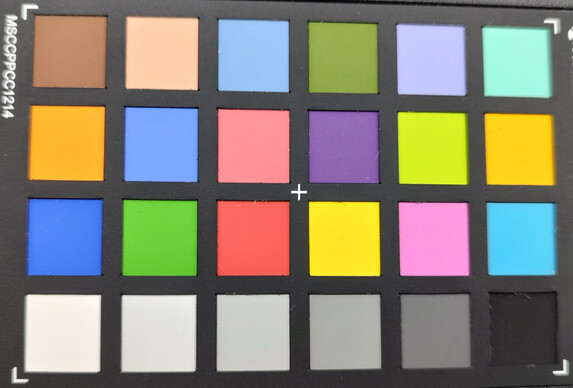

Accessories and warranty - Edge 20 Pro with 30-watt charger
The package contains a modular power adapter with a rated output of 30 watts, a USB charging cable, and a Ready-For HDMI cable. Our test device doesn't come with a protective film out of the box, and the protective case advertised by the manufacturer wasn't included with our sample, either.
Every Motorola Edge smartphone comes with a two-year standard limited warranty. An optional extended coverage can insure the Edge 20 Pro against mechanical failures for another 12 months. The optional Accidental Damage Protection Contract (94.99 Euros (~$111) for two years) provides additional coverage for physical damage or damage caused by liquids.
Input devices and handling - Edge 20 Pro with FaceUnlock
The capacitive touchscreen detects inputs very reliably, and the gliding properties of the Corning Gorilla Glass are outstanding. Using the device also benefits from the display's high refresh rate of 144 Hz, which makes image transitions and scrolling buttery-smooth. In addition, the capacitive touchscreen has a very low touch latency. The Edge 20 Pro scans for possible user input up to 576 times per second in certain applications (such as games).
A fingerprint scanner has been integrated into the power button for biometric security, and it impresses with a high recognition rate. However, its placement takes a lot of getting used to. The sensor is placed much too high, even for users with large hands, so that the fingers always need to be repositioned.
The Motorola phone can also be unlocked via facial data using face recognition, but this is performed using the 2D method, which isn't very secure.
Display - Moto phone with OLED panel
The Motorola Edge 20 Pro's 6.7-inch Max Vision OLED display offers 10-bit colors while meeting HDR10+ standards. The 20:9 panel has a 1080p resolution and features an adaptive refresh rate control. The flagship smartphone can automatically match this rate to the content displayed and adjust it between 48 and 144 Hz. Other smartphones, such as the Samsung Galaxy S21 Ultra, for example, have a minor advantage in terms of power consumption here, as the display's refresh rate can be reduced to as low as 10 Hz.
In our measurements, the OLED panel achieves a high luminance of 666 cd/m² using a homogeneous illumination. The Xiaomi Mi 11i, however, is much brighter. We also test the brightness with an evenly distributed ratio of dark to bright areas (APL50). In this case, we also measure a good brightness level of 686 cd/m², but this is significantly surpassed by the Mi 11i with 1,201 cd/m². Although the APL10 (theoretically) leaves some headroom, the Edge 20 Pro's brightness still isn't optimal for HDR content.
The Motorola smartphone uses pulse width modulation (PWM) at a high frequency of 472 Hz for brightness control. We measured a much lower frequency of 120 Hz in DC-dimming mode, but the fluctuations in amplitude are also significantly lower here.
| |||||||||||||||||||||||||
Brightness Distribution: 93 %
Center on Battery: 666 cd/m²
Contrast: ∞:1 (Black: 0 cd/m²)
ΔE ColorChecker Calman: 1.4 | ∀{0.5-29.43 Ø4.78}
ΔE Greyscale Calman: 1.9 | ∀{0.09-98 Ø5}
150.8% sRGB (Calman 2D)
Gamma: 2.209
CCT: 6646 K
| Motorola Edge 20 Pro OLED, 2400x1080, 6.7" | Xiaomi Mi 11i AMOLED, 2400x1080, 6.7" | OnePlus 9 AMOLED, 2400x1080, 6.6" | Nubia RedMagic 6S Pro AMOLED, 2400x1080, 6.8" | Samsung Galaxy S21+ Dynamic AMOLED 2X, 2400x1080, 6.7" | |
|---|---|---|---|---|---|
| Screen | -19% | 32% | -131% | -0% | |
| Brightness middle (cd/m²) | 666 | 875 31% | 731 10% | 714 7% | 814 22% |
| Brightness (cd/m²) | 644 | 879 36% | 739 15% | 705 9% | 814 26% |
| Brightness Distribution (%) | 93 | 96 3% | 96 3% | 96 3% | 97 4% |
| Black Level * (cd/m²) | |||||
| Colorchecker dE 2000 * | 1.4 | 1.8 -29% | 0.59 58% | 5.9 -321% | 2 -43% |
| Colorchecker dE 2000 max. * | 2.65 | 4.7 -77% | 1.3 51% | 8.7 -228% | 3.6 -36% |
| Greyscale dE 2000 * | 1.9 | 3.4 -79% | 0.9 53% | 6.8 -258% | 1.4 26% |
| Gamma | 2.209 100% | 2.19 100% | 2.243 98% | 2.25 98% | 2.12 104% |
| CCT | 6646 98% | 6220 105% | 6573 99% | 7774 84% | 6568 99% |
* ... smaller is better
Screen Flickering / PWM (Pulse-Width Modulation)
| Screen flickering / PWM detected | 471.7 Hz | ||
The display backlight flickers at 471.7 Hz (worst case, e.g., utilizing PWM) . The frequency of 471.7 Hz is relatively high, so most users sensitive to PWM should not notice any flickering. However, there are reports that some users are still sensitive to PWM at 500 Hz and above, so be aware. In comparison: 53 % of all tested devices do not use PWM to dim the display. If PWM was detected, an average of 8149 (minimum: 5 - maximum: 343500) Hz was measured. | |||
We check the display quality with a spectrophotometer and the CalMAN analysis software. The average DeltaE deviations from the sRGB color space are slightly higher in the default profile "Natural" than in the profile "Saturated". The larger DCI-P3 as well as the sRGB color space are nearly fully covered in the latter. With DeltaE values lower than 2, the Edge 20 Pro is within the ideal range, which includes deviation values below 3.
Display Response Times
| ↔ Response Time Black to White | ||
|---|---|---|
| 22 ms ... rise ↗ and fall ↘ combined | ↗ 19 ms rise | |
| ↘ 3 ms fall | ||
| The screen shows good response rates in our tests, but may be too slow for competitive gamers. In comparison, all tested devices range from 0.1 (minimum) to 240 (maximum) ms. » 47 % of all devices are better. This means that the measured response time is similar to the average of all tested devices (20.3 ms). | ||
| ↔ Response Time 50% Grey to 80% Grey | ||
| 8 ms ... rise ↗ and fall ↘ combined | ↗ 3 ms rise | |
| ↘ 5 ms fall | ||
| The screen shows fast response rates in our tests and should be suited for gaming. In comparison, all tested devices range from 0.165 (minimum) to 636 (maximum) ms. » 19 % of all devices are better. This means that the measured response time is better than the average of all tested devices (31.7 ms). | ||
The Motorola phone leaves a good impression outdoors. Thanks to the OLED panel's strong contrasts, the Edge 20 Pro remains legible even in direct sunlight, but its display brightness isn't always fully satisfactory when there are reflections.
The viewing-angle stability is very good due to the OLED technology used. There are barely any image shifts at flat viewing angles, but there is a decrease in brightness.
Performance - Moto Edge 20 Pro with Snapdragon SoC
With the Snapdragon 870, Motorola has installed a powerful 7 nm SoC that integrates a fast "Prime Core" running at up to 3.2 GHz and three additional performance cores based on the Cortex-A77 architecture with a clock rate of up to 2.42 GHz. To save power, four additional ARM Cortex-A55 cores have also been integrated (1.8 GHz). A powerful Adreno 650 graphics unit is also built into the Qualcomm SoC.
In everyday use, last year's high-end processor architecture in combination with the built-in 12 GB of LPDDR5 RAM provides a very good system performance. Animations and application loading times are pleasingly fast thanks to the very fast 144 Hz display and the UFS 3.1 storage, respectively.
As expected, the CPU benchmarks of the Snapdragon 870 in the Edge 20 Pro are weaker than those of the Snapdragon 888, which is typically found in this price range. Nevertheless, the Motorola phone is very competitive due to its lower heat development and the absence of SoC throttling, especially in longer GPU tests like GFXBench.
| Antutu v9 - Total Score (sort by value) | |
| Motorola Edge 20 Pro | |
| Xiaomi Mi 11i | |
| Average Qualcomm Snapdragon 870 5G (581322 - 716502, n=13) | |
| Average of class Smartphone (99654 - 2056989, n=32, last 2 years) | |
| UL Procyon AI Inference for Android - Overall Score NNAPI (sort by value) | |
| Motorola Edge 20 Pro | |
| OnePlus 9 | |
| Nubia RedMagic 6S Pro | |
| Average Qualcomm Snapdragon 870 5G (12855 - 18000, n=8) | |
| Average of class Smartphone (3769 - 81594, n=138, last 2 years) | |
| Jetstream 2 - 2.0 Total Score | |
| Average of class Smartphone (23.8 - 387, n=154, last 2 years) | |
| Xiaomi Mi 11i (Chrome 92.0.4515.115) | |
| Motorola Edge 20 Pro (Chrome 94) | |
| Nubia RedMagic 6S Pro (Chrome 92) | |
| Average Qualcomm Snapdragon 870 5G (60.7 - 108.3, n=12) | |
| Samsung Galaxy S21+ (Chrome 88.0.4324.152) | |
| OnePlus 9 (MS Edge) | |
| JetStream 1.1 - Total Score | |
| Xiaomi Mi 11i (Chrome 92.0.4515.115) | |
| Motorola Edge 20 Pro (Chrome 94) | |
| Nubia RedMagic 6S Pro (Chrome 92) | |
| Average Qualcomm Snapdragon 870 5G (105.1 - 184.5, n=9) | |
| OnePlus 9 (MS Edge) | |
| Samsung Galaxy S21+ (Chrome 88.0.4324.152) | |
| Speedometer 2.0 - Result 2.0 | |
| Average of class Smartphone (15.2 - 643, n=130, last 2 years) | |
| Xiaomi Mi 11i (Chrome 92.0.4515.115) | |
| Samsung Galaxy S21+ (Chrome 88.0.4324.152) | |
| Nubia RedMagic 6S Pro (Chrome 92) | |
| Motorola Edge 20 Pro (Chrome 94) | |
| Average Qualcomm Snapdragon 870 5G (51.4 - 77, n=12) | |
| OnePlus 9 (MS Edge) | |
| WebXPRT 3 - Overall | |
| Average of class Smartphone (38 - 380, n=38, last 2 years) | |
| Xiaomi Mi 11i (Chrome 92.0.4515.115) | |
| Average Qualcomm Snapdragon 870 5G (94 - 155, n=13) | |
| Motorola Edge 20 Pro (Chrome 94) | |
| Nubia RedMagic 6S Pro (Chrome 92) | |
| OnePlus 9 (MS Edge) | |
| Samsung Galaxy S21+ (Chrome 88.0.4324.152) | |
| Octane V2 - Total Score | |
| Average of class Smartphone (2228 - 121337, n=201, last 2 years) | |
| Xiaomi Mi 11i (Chrome 92.0.4515.115) | |
| Motorola Edge 20 Pro (Chrome 94) | |
| Nubia RedMagic 6S Pro (Chrome 92) | |
| Average Qualcomm Snapdragon 870 5G (20543 - 41256, n=13) | |
| Samsung Galaxy S21+ (Chrome 88.0.4324.152) | |
| OnePlus 9 (Chrome89) | |
| Mozilla Kraken 1.1 - Total | |
| Samsung Galaxy S21+ (Chrome 88.0.4324.152) | |
| OnePlus 9 (Chrome89) | |
| Nubia RedMagic 6S Pro (Chrome 92) | |
| Average Qualcomm Snapdragon 870 5G (1055 - 1792, n=13) | |
| Motorola Edge 20 Pro (Chrome 94) | |
| Average of class Smartphone (257 - 28190, n=156, last 2 years) | |
| Xiaomi Mi 11i (Chrome 92.0.4515.115) | |
* ... smaller is better
| Motorola Edge 20 Pro | Xiaomi Mi 11i | OnePlus 9 | Nubia RedMagic 6S Pro | Samsung Galaxy S21+ | Average 256 GB UFS 3.1 Flash | Average of class Smartphone | |
|---|---|---|---|---|---|---|---|
| AndroBench 3-5 | -10% | 7% | 15% | 31% | 41% | 74% | |
| Sequential Read 256KB (MB/s) | 1699 | 1628 -4% | 1872 10% | 1607 -5% | 1623 -4% | 1757 ? 3% | 2231 ? 31% |
| Sequential Write 256KB (MB/s) | 723 | 552 -24% | 739 2% | 765 6% | 1037 43% | 1204 ? 67% | 1848 ? 156% |
| Random Read 4KB (MB/s) | 245.7 | 181 -26% | 225.4 -8% | 285.8 16% | 309.6 26% | 287 ? 17% | 295 ? 20% |
| Random Write 4KB (MB/s) | 179.6 | 205.9 15% | 221.4 23% | 254.9 42% | 283.3 58% | 318 ? 77% | 336 ? 87% |
Games - Moto smartphone only with 60 fps
Its technical specifications make the Motorola flagship ideal for gaming: A fast SoC, a large 144 Hz OLED display with a sampling rate of 576 Hz, and good cooling. Nonetheless, we aren't completely satisfied with the gaming performance, which we checked with GameBench.
Although the Armajet arena shooter is rendered consistently, the Edge 20 Pro stops at 60 fps, even though the game supports 144 fps. We would have liked to see at least 120 fps here. A constant 60 fps is also possible in PUBG Mobile with the HD setting, and even at the highest detail level (UHD), there's no stuttering on the Motorola phone.
Emissions - Moto phone with moderate heat development
Temperature
Even under load, the surfaces of the Edge 20 Pro only reach harmless temperatures of a maximum of 40 °C (~104 °F). We weren't able to detect any performance throttling as a result of the low temperatures. The GFXBench battery test (OpenGL ES 3.1), as well as the newer 3DMark stress tests (Vulkan 1.0), don't show any performance losses.
(±) The maximum temperature on the upper side is 40.4 °C / 105 F, compared to the average of 35.2 °C / 95 F, ranging from 21.9 to 247 °C for the class Smartphone.
(+) The bottom heats up to a maximum of 39.7 °C / 103 F, compared to the average of 34 °C / 93 F
(+) In idle usage, the average temperature for the upper side is 25.3 °C / 78 F, compared to the device average of 32.9 °C / 91 F.
3DMark Wild Life Stress Test
| 3DMark | |
| Wild Life Stress Test Stability | |
| Motorola Edge 20 Pro | |
| Nubia RedMagic 6S Pro | |
| Samsung Galaxy S21+ | |
| OnePlus 9 | |
| Wild Life Extreme Stress Test | |
| Motorola Edge 20 Pro | |
| Nubia RedMagic 6S Pro | |
Speaker
Although the Edge 20 Pro is a high-end device, it only features a mono speaker. We measured a maximum volume of 82 dB, which is sufficient for everyday use, but not particularly loud. The bottom speaker has a linear frequency response for mids and highs. Bass is not present in the sound pattern.
Wired headphones can be connected to the smartphone via the USB-C port. Alternatively, this can also be done wirelessly via Bluetooth 5.1. Besides the SBC, AAC, and LDAC audio codecs, aptX, aptX HD, and aptX Adaptive are available as well.
Motorola Edge 20 Pro audio analysis
(+) | speakers can play relatively loud (82.8 dB)
Bass 100 - 315 Hz
(-) | nearly no bass - on average 25.2% lower than median
(±) | linearity of bass is average (12.5% delta to prev. frequency)
Mids 400 - 2000 Hz
(±) | higher mids - on average 5.1% higher than median
(±) | linearity of mids is average (7.1% delta to prev. frequency)
Highs 2 - 16 kHz
(+) | balanced highs - only 3.9% away from median
(+) | highs are linear (6.1% delta to prev. frequency)
Overall 100 - 16.000 Hz
(±) | linearity of overall sound is average (19.5% difference to median)
Compared to same class
» 27% of all tested devices in this class were better, 8% similar, 64% worse
» The best had a delta of 11%, average was 35%, worst was 134%
Compared to all devices tested
» 47% of all tested devices were better, 7% similar, 45% worse
» The best had a delta of 4%, average was 24%, worst was 134%
OnePlus 9 audio analysis
(+) | speakers can play relatively loud (83 dB)
Bass 100 - 315 Hz
(-) | nearly no bass - on average 68.3% lower than median
(+) | bass is linear (0% delta to prev. frequency)
Mids 400 - 2000 Hz
(-) | nearly no mids - on average 68.3% lower than median
(+) | mids are linear (0% delta to prev. frequency)
Highs 2 - 16 kHz
(-) | nearly no highs - on average 68.3% lower than median
(+) | highs are linear (0% delta to prev. frequency)
Overall 100 - 16.000 Hz
(-) | overall sound is not linear (117.1% difference to median)
Compared to same class
» 87% of all tested devices in this class were better, 6% similar, 6% worse
» The best had a delta of 11%, average was 35%, worst was 134%
Compared to all devices tested
» 96% of all tested devices were better, 2% similar, 2% worse
» The best had a delta of 4%, average was 24%, worst was 134%
Battery life - Edge 20 Pro with low power consumption
Energy consumption
The Edge 20 Pro exhibits a consistently lower power consumption than the Snapdragon 888 competition, especially in load scenarios. This can be seen very clearly in the GFXBench measurements with an adjusted display brightness (150 cd/m²).
The battery has a capacity of 4,500 mAh and supports fast wired charging at up to 30 watts. Wireless charging is not supported. The Edge 20 Pro is fully recharged in about 75 minutes with a 30-watt charger.
| Off / Standby | |
| Idle | |
| Load |
|
Key:
min: | |
| Motorola Edge 20 Pro 4500 mAh | Xiaomi Mi 11i 4520 mAh | OnePlus 9 4500 mAh | Nubia RedMagic 6S Pro 5050 mAh | Samsung Galaxy S21+ 4800 mAh | Average Qualcomm Snapdragon 870 5G | Average of class Smartphone | |
|---|---|---|---|---|---|---|---|
| Power Consumption | -46% | -72% | -39% | -34% | -89% | -54% | |
| Idle Minimum * (Watt) | 0.7 | 0.98 -40% | 0.9 -29% | 1.05 -50% | 0.74 -6% | 1.23 ? -76% | 0.849 ? -21% |
| Idle Average * (Watt) | 0.9 | 1.4 -56% | 1.7 -89% | 1.75 -94% | 1.27 -41% | 2.17 ? -141% | 1.43 ? -59% |
| Idle Maximum * (Watt) | 1.2 | 1.46 -22% | 2.7 -125% | 1.78 -48% | 1.33 -11% | 2.49 ? -108% | 1.612 ? -34% |
| Load Average * (Watt) | 4.6 | 6.21 -35% | 5.4 -17% | 3.31 28% | 6.32 -37% | 6.39 ? -39% | 7.08 ? -54% |
| Load Maximum * (Watt) | 5.5 | 9.62 -75% | 11.1 -102% | 7.18 -31% | 9.61 -75% | 9.94 ? -81% | 11.2 ? -104% |
* ... smaller is better
Energy consumption: Geekbench (150 cd/m²)
Energy consumption: GFXBench (150 cd/m²)
Battery life
The battery runtimes of the Motorola flagship were determined with a fixed 144 Hz refresh rate enabled. In our real-world Wi-Fi test, the Edge 20 Pro achieves very good rates with 13 hours and 21:30 hours of continuous video playback. The only surprise is the relatively poor endurance under full load considering the low power consumption.
| Motorola Edge 20 Pro 4500 mAh | Xiaomi Mi 11i 4520 mAh | OnePlus 9 4500 mAh | Nubia RedMagic 6S Pro 5050 mAh | Samsung Galaxy S21+ 4800 mAh | |
|---|---|---|---|---|---|
| Battery runtime | 3% | -9% | 7% | 6% | |
| Reader / Idle (h) | 28.2 | 27.6 -2% | 27.1 -4% | 29.7 5% | |
| H.264 (h) | 21.5 | 17 -21% | 15.5 -28% | 19.6 -9% | |
| WiFi v1.3 (h) | 12.9 | 11.5 -11% | 14.2 10% | 13.8 7% | 10.9 -16% |
| Load (h) | 3.3 | 4.8 45% | 2.8 -15% | 4.7 42% |
Pros
Cons
Verdict on the Motorola Edge 20 Pro
The Edge 20 Pro is an elegant and well-built premium smartphone that does many things right, but it also has some minor weaknesses. For instance, the flagship of the Edge 20 series doesn't feature wireless charging, OIS for the 108 MP camera, or a water-resistant IP certification. The mono speaker and the choice of the Snapdragon 870 don't really fit into the overall picture of a 700-Euro (~$818) phone, either. Especially since the Snapdragon 888 competition, such as the Xiaomi Mi 11i, achieves much better rates in our brightness measurements - we would have liked the Edge 20 Pro to have a bit more headroom for outdoor use.
With its flagship, Motorola finds a good mix of available performance/features and compromises associated with the fairly low pricing.
On the other hand, the Motorola flagship also offers a lot of positive aspects. The lightweight MyUX software including the Ready For functionality, the very good battery runtimes with a refresh rate of 144 Hz, as well as the appealing overall camera package should be mentioned here. In addition, the performance level of the Edge 20 Pro is even superior in some respects compared with the OnePlus 9 or Nubia RedMagic 6S Pro with the Snapdragon 888 due to its low heat development.
Price and availability
At the time of writing, the Motorola Edge 20 Pro isn't officially available in the United States yet. Nevertheless, you can already find it on newegg for around $729.
Motorola Edge 20 Pro
- 08/30/2022 v7 (old)
Marcus Herbrich




